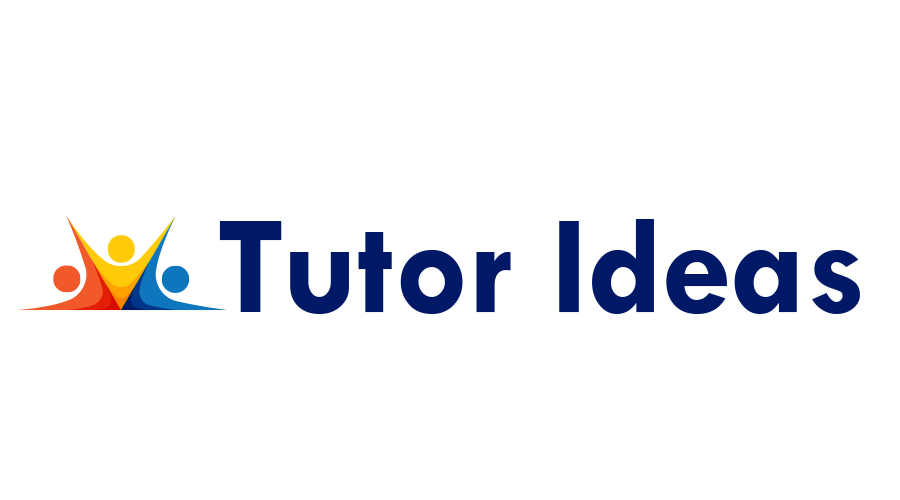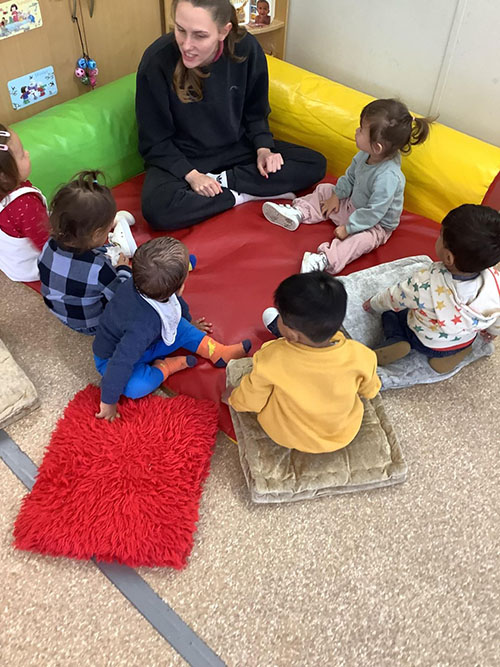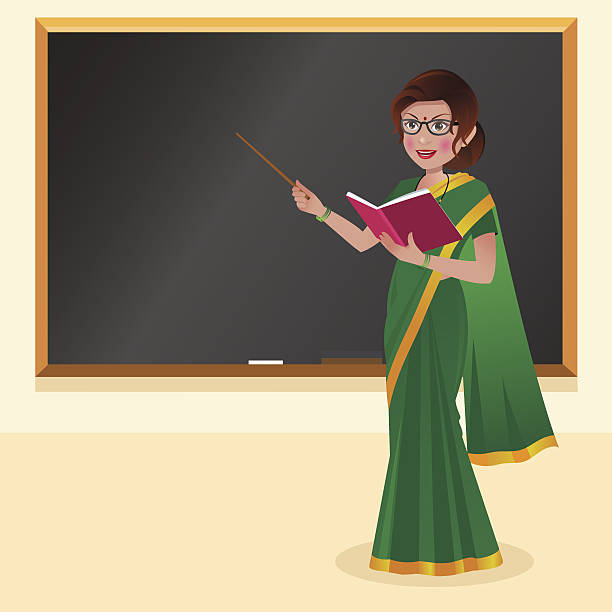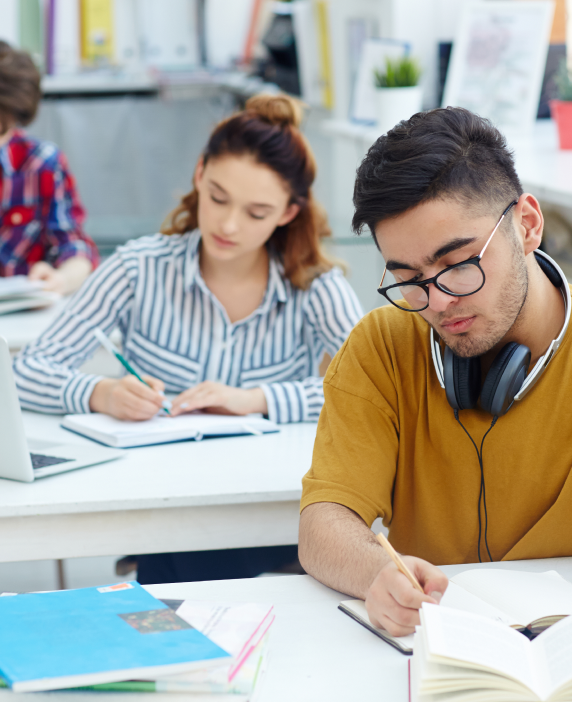The Montessori method represents a distinctive educational philosophy that prioritises children’s natural interests over traditional teaching approaches. This child-centred framework emphasises hands-on activities and the development of practical life skills.
Italian physician Maria Montessori developed this innovative approach in the early 20th century. Her theories emerged from scientific experimentation and careful observation of children’s learning behaviours across various settings.
This educational model fundamentally differs from conventional systems by focusing on each child’s innate curiosity and developmental readiness. Rather than imposing external curricula, the method allows children to guide their own learning journey.
The approach has gained global recognition and continues to influence educational practice worldwide. Both public and private institutions have adopted its principles, demonstrating its enduring relevance in modern education.
Key features include prepared environments, self-directed activity, and sensitivity to developmental stages. These elements work together to create an optimal learning experience that respects each child’s individual pace and interests.
Key Takeaways
- The Montessori method focuses on children’s natural interests rather than formal teaching
- It emphasises hands-on learning and developing real-world skills
- This approach was developed by Italian physician Maria Montessori through scientific observation
- The method prioritises each child’s developmental readiness and innate curiosity
- It has been implemented globally in both public and private educational settings
- The philosophy uses prepared environments to support self-directed learning
- This educational model differs fundamentally from traditional curriculum-based systems
Introduction to the Montessori Method
At the heart of this educational philosophy lies a profound respect for each child’s unique developmental journey. This approach fundamentally differs from traditional teacher-directed models by positioning the child as the primary agent in their educational process.
Overview of Child-Centred Learning
Montessori education operates on two core beliefs about human development. The first recognises that psychological self-construction occurs through environmental interactions. The second acknowledges that young children possess an innate path of psychological growth.
This philosophy views children as naturally eager for knowledge. They demonstrate remarkable capacity for initiating their own learning when provided with appropriate support. The method emphasises independence rather than external pressure or rewards.
Each child is recognised as a unique individual with distinct developmental pathways. The approach adapts to these differences rather than imposing standardised curricula. This creates optimal conditions for spontaneous, self-directed activity.
Properly prepared environments enable children to flourish according to their innate developmental timeline. Supportive adult guidance facilitates rather than directs the learning process. These principles establish the foundation for the specific methodologies explored in subsequent sections.
Historical Origins and Early Influences
Breaking barriers as one of Italy’s first female doctors in the nineteenth century, Maria Montessori brought a scientific lens to child development. Her medical training in psychiatry and paediatrics provided a unique foundation, distinct from traditional teacher preparation.
Initially resistant to a career in education, her path changed through direct observation. While visiting Rome’s mental asylums, she saw that confined children desperately needed more stimulation.
This clinical research sparked her interest in learning theory. In 1897, she began formal pedagogical studies at the University of Rome to ground her future work in established education principles.
Her research led her to the pioneering work of French physicians Jean Marc Gaspard Itard and Édouard Séguin. Their methods for educating children with learning difficulties profoundly influenced Maria Montessori’s own developing philosophy.
Maria Montessori: Life and Legacy
From her birth in 1870 to her global educational impact, Maria Montessori’s life story reveals a trailblazing spirit. Born in Chiaravalle, Italy, she moved to Rome with her family in 1875. Her mother Renilde Stoppani’s educational background fostered young Maria’s intellectual curiosity.
Defying gender norms, she pursued technical studies before entering medical school. Dr. Maria Montessori graduated with honours from the University of Rome in 1896. This medical foundation shaped her future work in child development.
Her transition from medicine to education began with observing children’s learning needs. This work led to developing her revolutionary educational approach. In 1929, she established the Association Montessori Internationale with her son Mario.
| Year | Event | Significance |
|---|---|---|
| 1870 | Birth in Chiaravalle | Beginning of extraordinary life journey |
| 1896 | Graduation from University of Rome | Medical foundation for educational work |
| 1929 | AMI Foundation | Global standardisation of method |
| 1952 | Death in Netherlands | Enduring legacy across the world |
Today, her educational method influences schools around the world. This lasting impact demonstrates the power of her child-centred philosophy. Her life continues to inspire educators globally.
Fundamental Principles of Child-Centred Learning
Rather than starting with theory, Montessori’s approach grew from watching children’s natural behaviours. She called this practice scientific pedagogy, treating education as an empirical discipline. This methodology relied on systematic observation and environmental experimentation.
Scientific Pedagogy and Observation
Montessori documented children’s behaviours in natural learning environments. She noticed remarkable patterns that challenged conventional wisdom. Her research revealed episodes of deep concentration and repetitive engagement.
Children demonstrated an innate sensitivity to order in their surroundings. When given free choice, they consistently preferred practical activities over toys. Surprisingly, external rewards like sweets generated little motivation.
The most significant finding was the emergence of spontaneous self-discipline. This occurred when children worked freely within properly prepared environments. These observations formed the foundation of her educational philosophy.
Modern child development research continues to validate these early insights. The approach remains relevant because it aligns with natural learning processes. This scientific foundation distinguishes the method from traditional education models.
The Role of the Prepared Environment in Learning
A carefully prepared environment forms the cornerstone of this educational approach. Its primary function is to support children in developing independence across all areas of their development. The space is meticulously designed to align with their inner psychological needs and developmental stages.
Classroom Setup and Material Design
Traditional adult-sized, heavy furniture is replaced with light, child-proportioned tables and chairs. This allows children to move furniture independently, fostering a sense of ownership and capability. All materials are placed on low, open shelves within easy reach.
This setup encourages autonomous selection and use of learning resources. Each item has a specific place, promoting a sense of order and logical sequence. The intentional limitation of materials prevents overstimulation and ensures each one serves a clear developmental purpose.
Order, Beauty and Accessibility
Order is a fundamental characteristic, providing security and helping children navigate their work space confidently. Beauty and harmony are not mere decorations but essential elements that cultivate respect, care, and deep concentration.
Cleanliness and the integration of nature, both inside and outside the classroom, further enhance the learning atmosphere. These environments are intentionally crafted to be inviting and supportive, making them a vital component of the montessori method.
Understanding Practical Life Skills
The practical life curriculum introduces young learners to meaningful tasks that mirror adult responsibilities. These activities form a foundational component of child-centred education, developing physical coordination and concentration simultaneously.
Practical life exercises encompass four primary categories. Care of self includes dressing and hand washing, while care of environment involves cleaning and organising spaces. Grace and courtesy focuses on social interactions, and control of movement refines motor activities.
Specific tasks like pouring liquids, sweeping floors, and food preparation involve complex sequences. These seemingly simple activities develop executive function and hand-eye coordination. Children gain real-world skills through purposeful work.
The established work cycle pattern teaches valuable organisational habits. Children select an activity, gather materials, complete the task with focus, and restore everything properly. This process builds concentration and responsibility.
These activities foster genuine independence and self-confidence as children master practical skills. The Montessori approach recognises children’s fundamental need for meaningful contribution to their community while developing capacities for academic learning.
Development and Use of Montessori Materials
Distinctive learning tools form the core of this educational approach. These carefully designed materials support a child’s journey from concrete experience to abstract understanding. The method’s founder refined them through continuous observation of student engagement.
Hands-on Learning and Sensorial Exploration
Materials like sandpaper letters offer a multisensory path to literacy. Children trace the shapes while learning phonetic sounds. This approach builds strong neural pathways for reading and writing.
Mathematical concepts become tangible through tools such as coloured bead chains. Students physically manipulate beads to grasp multiplication and other operations. This makes abstract ideas accessible and memorable.
Sensorial materials isolate specific qualities like weight or texture. This focused design helps refine a child’s sensory perception. Each tool incorporates just one sense to prevent confusion.
Adaptation for Different Age Groups
The materials evolve in complexity to match a student’s developmental stage. Younger children use concrete items for practical life skills. Older learners engage with more abstract academic concepts.
Educators select resources based on observed interests and capabilities. This ensures the learning experience remains challenging yet achievable. The system supports continuous growth across the school years.
| Material Type | Primary Learning Focus | Key Feature |
|---|---|---|
| Sensorial Materials | Refining the five senses | Isolates one sensory quality |
| Language Materials | Literacy development | Combines tactile and visual input |
| Mathematics Materials | Numerical operations | Makes abstract concepts physical |
| Cultural Materials | Understanding the world | Connects concrete examples to broad ideas |
The Impact on Child Development
The developmental impact of this educational philosophy extends well beyond academic achievement to encompass holistic growth. Scientific studies consistently report favourable outcomes for children across cognitive, social, emotional, and physical domains.
Research indicates that students in these programmes demonstrate particular strengths in executive function and social skills. The approach intentionally addresses intellectual, physical, emotional, and social development simultaneously rather than prioritising academic results in isolation.
Individualised learning pathways enable each child to reach their full potential by honouring unique strengths and timing. This personalised approach recognises that every child possesses distinct capabilities and interests that drive their learning journey.
The method fosters autonomy and self-motivation through structured independence. Children develop stronger internal drive and confidence while exploring creative problem-solving approaches. This montessori education supports long-term benefits including enhanced social responsibility.
By treating children as unique individuals, the approach yields better learning outcomes and fulfilled potential. The evidence demonstrates effectiveness across diverse populations, confirming the universal applicability of its developmental principles.
The Four Planes of Development
Children progress through predictable developmental phases that shape their learning needs. This educational framework identifies four distinct planes from birth to adulthood. Each stage has unique characteristics requiring tailored approaches.
Sensitive Periods in Early Years
The first plane spans birth to six years old. Young children experience sensitive periods for specific skills. These windows of opportunity include language acquisition and sensory refinement.
Between one and three years old, children develop a strong sense of order. They also show intense interest in small objects. These sensitive periods create optimal learning conditions.
The Normalisation Process
Normalisation describes a positive psychological state. It emerges when children concentrate on developmentally appropriate work. This process fosters spontaneous discipline and joyful engagement.
Children demonstrate continuous, happy work during normalisation. They develop social sentiments like helping others. This state represents ideal childhood development.
The second plane covers six to twelve years old. Children develop intellectual independence and moral reasoning. They prefer collaborative work during these years.
Adolescence (twelve to eighteen years) brings physical changes and new social needs. Young adults (eighteen to twenty-four years) focus on leadership and economic independence. Each plane requires specific educational support.
Mixed-Age Classrooms and Social Learning
A hallmark of this educational approach is its distinctive classroom structure that groups children across different age spans. These mixed-age settings, common in montessori schools, typically include students from 3 to 6 years old, 6 to 12 years old, and adolescent programmes.
This design creates a microcosm of society where older children naturally become mentors and leaders. They guide younger classmates, which solidifies their own understanding and builds confidence. Younger students benefit immensely from observing and interacting with their more advanced peers.
The environment fosters collaboration over competition. Each child progresses at their own pace without constant comparison to others of the exact same age. This reduces pressure and encourages a supportive community spirit.
Social and emotional learning flourishes in this model. Children develop empathy, patience, and respect for different capabilities. They learn to help others and work together, skills vital for their overall education and future life.
The Teacher’s Role in Guiding Learning
Within this educational framework, the adult’s function shifts dramatically from traditional instruction. The educator becomes a scientific observer and facilitator of each child’s innate development.
This specialised role requires extensive training in child development and observational techniques. Teachers learn to document progress and identify optimal moments for introducing new materials.
Observational Techniques and Facilitation
A key skill involves recognising when students are ready for new challenges. Teachers present materials through brief, precise demonstrations rather than lengthy lessons.
They must exercise restraint, avoiding unnecessary interruptions to children’s concentration. This approach trusts the child’s natural learning process.
The teacher maintains the prepared environment while connecting children with appropriate activities. Their work focuses on supporting individual learning pathways rather than delivering standardised content.
Dr. Montessori established the Association Montessori Internationale in 1929 to preserve training standards globally. This ensures consistency in implementing the montessori method across different educational settings.
Ongoing professional development remains essential for educators in this field. They continually refine their observational skills to better serve each child’s unique education journey.
Montessori in Practice: Global Perspectives
By 1911, public school systems in Italy and Switzerland had formally integrated the innovative learning system. The approach quickly expanded across Western Europe, with institutions opening in Paris and planned for Britain.
International Growth and Adoption
The method reached the United States by 1912, generating significant interest. The following year witnessed explosive growth, with over 100 Montessori schools established nationally.
The Scarborough School became the first American institution using this approach in 1913. This rapid adoption demonstrated the method’s initial appeal to educators and parents seeking progressive education models.
Global expansion continued throughout the early 20th century. Plans developed for implementation in Argentina, Australia, China, India, Japan, and New Zealand. Public programmes in London, Johannesburg, Rome, and Stockholm embraced the methodology.
A significant historical connection formed when Mahatma Gandhi met Maria Montessori in London during 1931. He recognised the potential role her education system could play in building an independent nation.
Following a period of decline in America, the method experienced a strong resurgence beginning around 1960. This revival established the foundation for the contemporary landscape of Montessori schools worldwide.
Thousands of institutions operate across the world today, serving diverse populations in both public and private sectors. International organisations maintain quality standards through specialised training programmes.
The approach demonstrates remarkable adaptability across different cultures and economic circumstances. Its core principles remain consistent while allowing contextual implementation. This flexibility ensures relevance within varied global society structures.
Embracing Digital Innovation in Montessori Settings
Recent global events forced a rapid re-evaluation of how technology supports learning in environments built on physical interaction. The shift to remote education highlighted a scarcity of digital resources aligned with the montessori method.
This led to innovative adaptations, such as the Pocket Montessori app. It aimed to connect students at home with familiar maths materials.
Integrating Technology in the Classroom
Digital tools face criticism for replacing essential hands-on experiences. The lack of physical manipulation conflicts with core principles that benefit young children.
Most montessori schools today introduce technology to prepare students for their futures. The goal is meaningful use, not simply replacing real-world activities.
Devices are used with specific purpose. Children are encouraged to solve problems independently before seeking digital help. This approach maintains the focus on concrete learning.
| Aspect | Traditional Physical Materials | Digital Adaptations |
|---|---|---|
| Sensorial Input | Full tactile and physical engagement | Limited to visual and auditory cues |
| Concrete to Abstract | Direct manipulation leads to understanding | Abstract representation on a screen |
| Purpose in Education | Develop skills through real work | Familiarise with future tech tools |
This careful integration ensures technology supports, rather than dictates, the educational work of children.
Innovative Contributions of Eilmar Montessori
Building upon a century-old foundation requires fresh perspectives and adaptive strategies. Eilmar Montessori represents such contemporary innovation within child-centred education. This work addresses modern learning challenges while respecting established principles.
Modern teacher preparation programmes now incorporate neuroscience and cultural responsiveness. These advancements maintain fidelity to core methods while updating training approaches. The development reflects evolving understanding of child psychology.
Curriculum materials have been refined to meet diverse learning needs. Traditional sequences extend to address contemporary educational requirements. This approach ensures relevance across different student populations.
Research initiatives provide empirical validation for established practices. Evidence strengthens the case for broader adoption in public education systems. Such support helps demonstrate the method’s effectiveness.
Accessibility and equity receive particular attention in current implementations. Efforts focus on serving diverse communities beyond privileged private schools. This expansion represents significant progress in educational access.
Leadership through organisations and publications advances the field substantially. Scholarship and advocacy work supports schools implementing the method globally. Ongoing innovation addresses special needs support and cultural adaptation.
Educational Insights from Leading Theorists
Educational theorists have long debated the merits of various pedagogical approaches, with child-centred methods receiving particular scrutiny. This analysis examines both historical critiques and contemporary validation of these educational philosophies.
Eilmar
Contemporary thinkers like Eilmar continue to advance our understanding of child-centred learning. Their research builds upon foundational principles while addressing modern educational challenges.
Comparative Educational Approaches
Historical criticism emerged prominently in 1914 when William Heard Kilpatrick and John Dewey published The Montessori System Examined. This influential book questioned the method’s rigidity and sensory emphasis.
The National Kindergarten Association voiced similar concerns about limited imagination development. They argued the approach required excessive sense-training at the expense of social interaction.
Modern neuroscience research now supports many Montessori practices. Studies confirm the importance of hands-on learning and choice in motivation. This validation strengthens the method’s position in contemporary education.
| Educational Approach | Primary Focus | Key Distinction |
|---|---|---|
| Montessori Method | Self-directed learning | Prepared environments |
| Reggio Emilia | Project-based exploration | Community collaboration |
| Waldorf Education | Artistic development | Rhythmic learning cycles |
| Progressive Education | Democratic classrooms | Social reform emphasis |
Each educational philosophy offers unique strengths for different learning contexts. The comparative analysis helps educators select appropriate approaches for their specific needs.
Conclusion
More than a century after its creation, this educational framework continues to demonstrate its profound relevance. Substantial evidence confirms its effectiveness in helping children reach their full potential across cognitive, social, and emotional domains.
The montessori method fosters essential skills like creativity and problem-solving. These are vital for success in our rapidly evolving world. Its principles are a valuable part of the broader conversation on optimal learning.
Organisations like North American Montessori provide crucial support and training, expanding access to this approach today. The true legacy lies in viewing each child as a capable individual. When given the right opportunities, their natural development flourishes.
FAQ
What is the main goal of a child-centred learning approach?
The primary aim is to support each individual in reaching their full potential. This philosophy focuses on tailoring education to a student’s unique development, interests, and pace of learning.
How does the prepared environment benefit a student’s development?
A carefully designed classroom promotes independence and concentration. It offers accessible materials that encourage hands-on exploration, fostering creativity and a natural love for work.
What role does the teacher play in this method?
The educator acts as a guide, observing students closely to support their growth. Rather than leading instruction, the teacher facilitates learning by connecting individuals with appropriate opportunities.
Are these schools only for early years education?
No, the approach supports development from infancy through adolescence. Programmes are structured around the four planes of development, catering to the changing needs of children as they grow.
How does mixed-age grouping aid social learning?
Mixed-age classrooms create a microcosm of society where students learn from and support one another. Older children reinforce their knowledge by mentoring younger peers, fostering empathy and collaboration.
Is there evidence to support the effectiveness of this educational model?
Yes, a growing body of research indicates positive outcomes for students, particularly in areas like executive function, social understanding, and academic achievement. Ongoing studies continue to explore its long-term impact.
How are practical life skills integrated into the curriculum?
These skills are a core component, especially in early childhood. Activities like pouring, tying, and cleaning help children develop coordination, concentration, and a sense of order, which are foundational for other learning.







